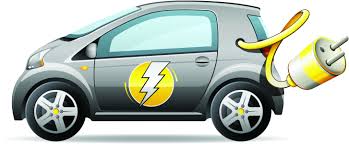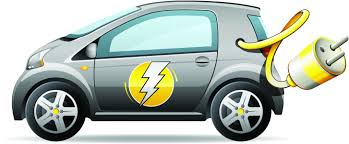
A new field for commodities investors could be opened up and the market for metals used in the electric car industry could be revolutionized by the new materials that go into such cars even as electric cars, like the Nissan Leaf, may look no different from the standard family runaround.
"We identified electric vehicles as an area where we are at an inflection point for demand," said Duncan Goodwin, portfolio manager of the Baring Global Resources Fund.
Materials that are used in electric vehicles is the area where around 12 percent of the fund's $378.2 million in assets is exposed. Two companies producing lithium, a key element in electric car batteries, New York-listed Albemarle and Australia's Orocobre, are recipients of its investments. This year, shares in both companies have risen sharply.
Consumers are being tempted with perks like subsidies, free parking and tax breaks by governments that are keen to push growth in electric cars in a bid to meet their carbon emissions targets. An opportunity for commodities investments currently estimated at $235 billion is in turn being created by growth in the market.
But it is not a simple one-way bet.
Advances in battery technology could alter the mixture of much of any metal will be needed to meet demand for electric vehicles in the longer term and any prediction is tough to make.
Many potential buyers have been put off by the need to charge them up frequently and time taken to do so and therefore getting drivers to adopt electric cars remains a challenge.
But electric car prototypes dominated the Paris car show last week due to the concerns over the pollution created by diesel-powered vehicles.
According to the International Energy Agency, the number of electric and hybrid vehicles on the road worldwide surpassed 1 million last year.
Up from just over 14,000 in 2010, nearly 4 percent of all light vehicles worldwide by 2020, equivalent to 3.9 million cars, would be comprised of electric cars, expects IHS Automotive even as estimates vary.
So what sits below the bonnet in these vehicles?
Lithium nickel manganese cobalt oxide (NMC) cathodes and graphite anodes are present in most electric car batteries.
"It's clear that electric cars from today's point of view will have lithium ion-based batteries. We're talking about lithium, and... metals like cobalt, iron phosphate, rare earth elements," said Horst Friedrich, director of Germany's Institute of Vehicle Concepts.
Mining lithium is increasingly becoming lucrative business. Even as much of the world's lithium comes from an area called the "Lithium triangle" in Chile, Argentina and Bolivia, in within a year, prices of battery grade lithium in China, the biggest lithium ion battery producer, surged to above $20,000 a tonne this summer, nearly three times.
"The lithium industry is going from 160,000 tonnes of LCE (lithium carbonate equivalent) today to at least 260,000 tonnes by 2020," said Simon Moores, managing director of Benchmark Mineral Intelligence.
Since there is an abundance of lithium in the earth's crust, critics caution against expecting shortages of the metal.
Moreover, in batteries such as the lithium sulfur battery being developed by Oxis Energy, based in the English city of Oxford, metals such as nickel, cobalt and manganese may not be needed.
Also hydrogen fuel cell, being mooted as possible rivals to batteries, is among those technologies that are being developed for green vehicle. But to commercialize new technology takes time.
"We consider the risk of substitution of lithium to be very low," said CRU Group's Julia Ralph.
(Source:www.reuters.com)
"We identified electric vehicles as an area where we are at an inflection point for demand," said Duncan Goodwin, portfolio manager of the Baring Global Resources Fund.
Materials that are used in electric vehicles is the area where around 12 percent of the fund's $378.2 million in assets is exposed. Two companies producing lithium, a key element in electric car batteries, New York-listed Albemarle and Australia's Orocobre, are recipients of its investments. This year, shares in both companies have risen sharply.
Consumers are being tempted with perks like subsidies, free parking and tax breaks by governments that are keen to push growth in electric cars in a bid to meet their carbon emissions targets. An opportunity for commodities investments currently estimated at $235 billion is in turn being created by growth in the market.
But it is not a simple one-way bet.
Advances in battery technology could alter the mixture of much of any metal will be needed to meet demand for electric vehicles in the longer term and any prediction is tough to make.
Many potential buyers have been put off by the need to charge them up frequently and time taken to do so and therefore getting drivers to adopt electric cars remains a challenge.
But electric car prototypes dominated the Paris car show last week due to the concerns over the pollution created by diesel-powered vehicles.
According to the International Energy Agency, the number of electric and hybrid vehicles on the road worldwide surpassed 1 million last year.
Up from just over 14,000 in 2010, nearly 4 percent of all light vehicles worldwide by 2020, equivalent to 3.9 million cars, would be comprised of electric cars, expects IHS Automotive even as estimates vary.
So what sits below the bonnet in these vehicles?
Lithium nickel manganese cobalt oxide (NMC) cathodes and graphite anodes are present in most electric car batteries.
"It's clear that electric cars from today's point of view will have lithium ion-based batteries. We're talking about lithium, and... metals like cobalt, iron phosphate, rare earth elements," said Horst Friedrich, director of Germany's Institute of Vehicle Concepts.
Mining lithium is increasingly becoming lucrative business. Even as much of the world's lithium comes from an area called the "Lithium triangle" in Chile, Argentina and Bolivia, in within a year, prices of battery grade lithium in China, the biggest lithium ion battery producer, surged to above $20,000 a tonne this summer, nearly three times.
"The lithium industry is going from 160,000 tonnes of LCE (lithium carbonate equivalent) today to at least 260,000 tonnes by 2020," said Simon Moores, managing director of Benchmark Mineral Intelligence.
Since there is an abundance of lithium in the earth's crust, critics caution against expecting shortages of the metal.
Moreover, in batteries such as the lithium sulfur battery being developed by Oxis Energy, based in the English city of Oxford, metals such as nickel, cobalt and manganese may not be needed.
Also hydrogen fuel cell, being mooted as possible rivals to batteries, is among those technologies that are being developed for green vehicle. But to commercialize new technology takes time.
"We consider the risk of substitution of lithium to be very low," said CRU Group's Julia Ralph.
(Source:www.reuters.com)














